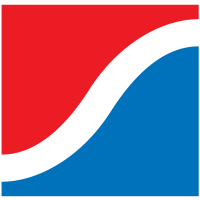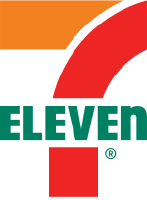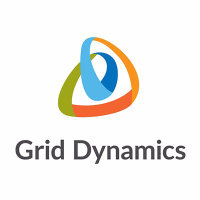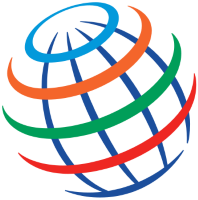
Equinor ASA
OSE:EQNR


| US |

|
Johnson & Johnson
NYSE:JNJ
|
Pharmaceuticals
|
| US |

|
Berkshire Hathaway Inc
NYSE:BRK.A
|
Financial Services
|
| US |

|
Bank of America Corp
NYSE:BAC
|
Banking
|
| US |

|
Mastercard Inc
NYSE:MA
|
Technology
|
| US |

|
UnitedHealth Group Inc
NYSE:UNH
|
Health Care
|
| US |

|
Exxon Mobil Corp
NYSE:XOM
|
Energy
|
| US |

|
Pfizer Inc
NYSE:PFE
|
Pharmaceuticals
|
| US |

|
Palantir Technologies Inc
NYSE:PLTR
|
Technology
|
| US |

|
Nike Inc
NYSE:NKE
|
Textiles, Apparel & Luxury Goods
|
| US |

|
Visa Inc
NYSE:V
|
Technology
|
| CN |

|
Alibaba Group Holding Ltd
NYSE:BABA
|
Retail
|
| US |

|
JPMorgan Chase & Co
NYSE:JPM
|
Banking
|
| US |

|
Coca-Cola Co
NYSE:KO
|
Beverages
|
| US |

|
Walmart Inc
NYSE:WMT
|
Retail
|
| US |

|
Verizon Communications Inc
NYSE:VZ
|
Telecommunication
|
| US |

|
Chevron Corp
NYSE:CVX
|
Energy
|
Utilize notes to systematically review your investment decisions. By reflecting on past outcomes, you can discern effective strategies and identify those that underperformed. This continuous feedback loop enables you to adapt and refine your approach, optimizing for future success.
Each note serves as a learning point, offering insights into your decision-making processes. Over time, you'll accumulate a personalized database of knowledge, enhancing your ability to make informed decisions quickly and effectively.
With a comprehensive record of your investment history at your fingertips, you can compare current opportunities against past experiences. This not only bolsters your confidence but also ensures that each decision is grounded in a well-documented rationale.
Do you really want to delete this note?
This action cannot be undone.

| 52 Week Range |
229.7
298.1
|
| Price Target |
|
We'll email you a reminder when the closing price reaches NOK.
Choose the stock you wish to monitor with a price alert.

|
Johnson & Johnson
NYSE:JNJ
|
US |

|
Berkshire Hathaway Inc
NYSE:BRK.A
|
US |

|
Bank of America Corp
NYSE:BAC
|
US |

|
Mastercard Inc
NYSE:MA
|
US |

|
UnitedHealth Group Inc
NYSE:UNH
|
US |

|
Exxon Mobil Corp
NYSE:XOM
|
US |

|
Pfizer Inc
NYSE:PFE
|
US |

|
Palantir Technologies Inc
NYSE:PLTR
|
US |

|
Nike Inc
NYSE:NKE
|
US |

|
Visa Inc
NYSE:V
|
US |

|
Alibaba Group Holding Ltd
NYSE:BABA
|
CN |

|
JPMorgan Chase & Co
NYSE:JPM
|
US |

|
Coca-Cola Co
NYSE:KO
|
US |

|
Walmart Inc
NYSE:WMT
|
US |

|
Verizon Communications Inc
NYSE:VZ
|
US |

|
Chevron Corp
NYSE:CVX
|
US |
This alert will be permanently deleted.
Equinor ASA

Equinor ASA, originally known as Statoil, is a global energy company rooted in Norway, with a legacy steeped in the exploration and production of oil and gas. Founded in 1972, Equinor has evolved significantly from its early days as a state-owned entity focused on tapping into the rich resources of the North Sea. Today, it stands as a publicly traded company that balances its core expertise in hydrocarbons with a growing emphasis on renewable energy sources. At the heart of Equinor’s operations is its ability to harness conventional and sophisticated technologies to efficiently extract and produce oil and natural gas, securing its status as a major player in the global energy market. Its strategic presence spans across 30 countries, ensuring a diversified portfolio that reduces reliance on any single market or resource.
Modern Equinor is a testament to the energy sector’s transition towards sustainability while striving for profitability. The company is increasingly investing in renewable energy projects, such as offshore wind farms, positioning itself as a leader in the green transition. This duality in operations allows Equinor to tap into the oil revenue that still fuels much of the world’s energy needs while also preparing for an inevitable shift towards renewable resources. The blend of securing traditional energy assets with an eye on sustainable growth not only fortifies its revenue streams but also enhances its resilience against the volatility of oil prices. By capitalizing on its robust infrastructure and expertise, Equinor aims to sustain its core business model while actively contributing to a greener future, embodying a pragmatic approach to bridging energy past and future.

Equinor ASA, originally known as Statoil, is a global energy company rooted in Norway, with a legacy steeped in the exploration and production of oil and gas. Founded in 1972, Equinor has evolved significantly from its early days as a state-owned entity focused on tapping into the rich resources of the North Sea. Today, it stands as a publicly traded company that balances its core expertise in hydrocarbons with a growing emphasis on renewable energy sources. At the heart of Equinor’s operations is its ability to harness conventional and sophisticated technologies to efficiently extract and produce oil and natural gas, securing its status as a major player in the global energy market. Its strategic presence spans across 30 countries, ensuring a diversified portfolio that reduces reliance on any single market or resource.
Modern Equinor is a testament to the energy sector’s transition towards sustainability while striving for profitability. The company is increasingly investing in renewable energy projects, such as offshore wind farms, positioning itself as a leader in the green transition. This duality in operations allows Equinor to tap into the oil revenue that still fuels much of the world’s energy needs while also preparing for an inevitable shift towards renewable resources. The blend of securing traditional energy assets with an eye on sustainable growth not only fortifies its revenue streams but also enhances its resilience against the volatility of oil prices. By capitalizing on its robust infrastructure and expertise, Equinor aims to sustain its core business model while actively contributing to a greener future, embodying a pragmatic approach to bridging energy past and future.
Production Growth: Equinor's production rose 7% year-over-year in Q3, with strong contributions from Johan Sverdrup and the new Johan Castberg field.
Financial Performance: Adjusted operating income was $6.2 billion before tax, but net income was negative $0.2 billion due to impairments driven by lower long-term oil price assumptions.
Cash Flow & Balance Sheet: Cash flow from operations year-to-date reached $14.7 billion, and the net debt to capital employed ratio fell to 12.2%.
Cost Control: Operating costs remained stable year-to-date; renewables operating costs were down about 50% versus last year.
Capital Returns: The board approved a $0.37 per share dividend and a $1.266 billion final tranche for the 2025 share buyback program, bringing total 2024 capital distribution to about $9 billion.
MMP Guidance: Guidance for Marketing, Midstream & Processing (MMP) was reduced to around $400 million per quarter, reflecting normalized market conditions and asset divestments.
Offshore Wind & Ørsted: Equinor remains cautious on new offshore wind investments, focusing capital on existing projects. The company increased its stake and will seek a board seat at Ørsted to pursue greater industrial collaboration.
Major Projects: Bacalhau in Brazil began production in October and is ramping up, while progress continues at Empire Wind, Dogger Bank, and Baltic projects.
Impairments: Net impairments totaled $754 million, mainly due to lower oil price assumptions affecting international and U.S. assets.
Management
Anders Opedal is a prominent Norwegian business executive known for his leadership role at Equinor ASA, a major energy company previously known as Statoil. Born in 1968 in Odda, Norway, Opedal has an engineering background, having earned a Master’s degree in Engineering from the Norwegian Institute of Technology. He also holds an MBA from Heriot-Watt University in Edinburgh. Opedal joined Equinor in 1997, and over the years, he has held various leadership positions within the company. His roles have ranged from being a Project Manager to being responsible for projects and procurement, as well as overseeing technology and digitalization. In these positions, he has garnered a reputation for focusing on enhancing operational efficiency and advancing technological innovation. In 2016, Opedal became the Executive Vice President for Development and Production in Norway, where he played a critical role in optimizing Equinor's operations in the country. His ability to drive change and efficiency led to significant improvements in performance and cost management. On November 1, 2020, he took over as the President and CEO of Equinor, succeeding Eldar Sætre. As CEO, Anders Opedal has been instrumental in steering the company towards a more sustainable future, emphasizing Equinor's commitment to the energy transition and reducing carbon emissions. Under his leadership, Equinor has been focusing on expanding its renewable energy portfolio, particularly in offshore wind, and aiming to achieve net-zero emissions by 2050. His leadership style and strategic vision are recognized for successfully balancing the demands of traditional energy production with the growing need for sustainable energy solutions.
Opedal joined Equinor in 1997, and over the years, he has held various leadership positions within the company. His roles have ranged from being a Project Manager to being responsible for projects and procurement, as well as overseeing technology and digitalization. In these positions, he has garnered a reputation for focusing on enhancing operational efficiency and advancing technological innovation.
In 2016, Opedal became the Executive Vice President for Development and Production in Norway, where he played a critical role in optimizing Equinor's operations in the country. His ability to drive change and efficiency led to significant improvements in performance and cost management.
On November 1, 2020, he took over as the President and CEO of Equinor, succeeding Eldar Sætre. As CEO, Anders Opedal has been instrumental in steering the company towards a more sustainable future, emphasizing Equinor's commitment to the energy transition and reducing carbon emissions. Under his leadership, Equinor has been focusing on expanding its renewable energy portfolio, particularly in offshore wind, and aiming to achieve net-zero emissions by 2050.
His leadership style and strategic vision are recognized for successfully balancing the demands of traditional energy production with the growing need for sustainable energy solutions.

Torgrim Reitan is a notable figure within Equinor ASA, a major energy company formerly known as Statoil. Born in 1969, Reitan has established a strong reputation in the energy sector through his extensive experience and leadership roles within the company. He began his career at Equinor in 1995 and has held various important positions over the years. Reitan has a solid background in economics, having earned a degree in Business Economics from the Norwegian School of Economics (NHH). This educational foundation helped him ascend through different roles in finance and management within Equinor. One of his notable roles includes serving as the Chief Financial Officer (CFO) of Equinor from 2010 to 2018. During his tenure as CFO, Reitan played a crucial role in managing the financial strategy and operations of the company, navigating it through challenging periods in the global energy market. His leadership was instrumental in maintaining Equinor's financial health and competitive stance in the industry. After his tenure as CFO, Reitan took on other significant roles, including executive roles in Equinor's Development and Production USA and Equinor's International segment. Most recently, he was appointed as the Executive Vice President for Projects, Drilling, and Procurement. In this position, he oversees Equinor's major projects, drilling activities, and procurement functions, further demonstrating his extensive expertise in the energy sector. Reitan's career reflects his adaptability and expertise across various aspects of the energy business, making him a key figure in Equinor's ongoing efforts to lead in energy transition and sustainability initiatives. His ongoing contributions continue to shape the company's strategic direction and operational excellence.

He began his career at Equinor in 1995 and has held various important positions over the years. Reitan has a solid background in economics, having earned a degree in Business Economics from the Norwegian School of Economics (NHH). This educational foundation helped him ascend through different roles in finance and management within Equinor.
One of his notable roles includes serving as the Chief Financial Officer (CFO) of Equinor from 2010 to 2018. During his tenure as CFO, Reitan played a crucial role in managing the financial strategy and operations of the company, navigating it through challenging periods in the global energy market. His leadership was instrumental in maintaining Equinor's financial health and competitive stance in the industry.
After his tenure as CFO, Reitan took on other significant roles, including executive roles in Equinor's Development and Production USA and Equinor's International segment. Most recently, he was appointed as the Executive Vice President for Projects, Drilling, and Procurement. In this position, he oversees Equinor's major projects, drilling activities, and procurement functions, further demonstrating his extensive expertise in the energy sector.
Reitan's career reflects his adaptability and expertise across various aspects of the energy business, making him a key figure in Equinor's ongoing efforts to lead in energy transition and sustainability initiatives. His ongoing contributions continue to shape the company's strategic direction and operational excellence.
Hege Skryseth is a prominent business executive known for her expertise in digital technology and innovation. She serves in a leadership role at Equinor ASA, a leading energy company headquartered in Norway. Skryseth has a strong background in technology, having held significant positions in various organizations where she drove digital transformation and strategy. Before joining Equinor, she was the CEO of Kongsberg Digital, where she focused on advancing technologies such as data analytics and artificial intelligence to enhance industrial processes. Her leadership skills are complemented by her commitment to sustainability and innovation in the energy sector, making her a key figure in Equinor’s efforts to leverage digital solutions for energy transition and operational efficiency. Hege Skryseth is recognized for her strategic vision and ability to lead complex projects, and she often speaks on topics related to digitalization, technology trends, and sustainable development. Her contributions have been influential in positioning Equinor at the forefront of integrating digital innovations within the energy industry. Skryseth's professional journey reflects her passion for using technology as a catalyst for change in traditional sectors.
Before joining Equinor, she was the CEO of Kongsberg Digital, where she focused on advancing technologies such as data analytics and artificial intelligence to enhance industrial processes. Her leadership skills are complemented by her commitment to sustainability and innovation in the energy sector, making her a key figure in Equinor’s efforts to leverage digital solutions for energy transition and operational efficiency.
Hege Skryseth is recognized for her strategic vision and ability to lead complex projects, and she often speaks on topics related to digitalization, technology trends, and sustainable development. Her contributions have been influential in positioning Equinor at the forefront of integrating digital innovations within the energy industry. Skryseth's professional journey reflects her passion for using technology as a catalyst for change in traditional sectors.
Siv Helen Rygh Torstensen is an accomplished executive with a notable career at Equinor ASA, a prominent energy company based in Norway. She has held various significant leadership positions within the organization, showcasing her expertise in multiple areas of the energy sector. At Equinor, she has been instrumental in driving strategic initiatives and contributing to the company's growth and sustainability efforts. Torstensen's career is marked by her strong background in economics and management, which has enabled her to effectively oversee complex projects and operations. She has been involved in key areas such as financial management, project development, and corporate governance. As part of Equinor's leadership team, she has played a key role in promoting innovation and adapting to the evolving energy landscape, particularly regarding renewable energy and sustainability practices. Additionally, Siv Helen Rygh Torstensen has been recognized for her ability to lead diverse teams and foster an inclusive working environment. Her strategic vision and commitment to excellence have made her a respected figure within the energy industry. Her contributions continue to shape Equinor's efforts toward achieving long-term value creation and maintaining its position as a leader in the global energy market.
Torstensen's career is marked by her strong background in economics and management, which has enabled her to effectively oversee complex projects and operations. She has been involved in key areas such as financial management, project development, and corporate governance. As part of Equinor's leadership team, she has played a key role in promoting innovation and adapting to the evolving energy landscape, particularly regarding renewable energy and sustainability practices.
Additionally, Siv Helen Rygh Torstensen has been recognized for her ability to lead diverse teams and foster an inclusive working environment. Her strategic vision and commitment to excellence have made her a respected figure within the energy industry. Her contributions continue to shape Equinor's efforts toward achieving long-term value creation and maintaining its position as a leader in the global energy market.
Jannik Lindbæk Jr. is a notable figure in the Norwegian business community, primarily known for his association with Equinor ASA, a major energy company formerly known as Statoil. With extensive experience in international business and finance, Lindbæk has played a significant role in shaping corporate governance and strategy within the organizations he has been part of. He is recognized for his contributions to Equinor's board, where his insights and leadership have helped steer the company's policies and decisions, especially during periods of transition and adaptation to global energy challenges. Lindbæk's expertise also extends to roles in various other companies and institutions, reflecting his broad impact on the industry. His leadership style and focus on sustainable business practices have been influential in promoting corporate responsibility and ethical governance within the energy sector.
He is recognized for his contributions to Equinor's board, where his insights and leadership have helped steer the company's policies and decisions, especially during periods of transition and adaptation to global energy challenges. Lindbæk's expertise also extends to roles in various other companies and institutions, reflecting his broad impact on the industry. His leadership style and focus on sustainable business practices have been influential in promoting corporate responsibility and ethical governance within the energy sector.
Irene Rummelhoff is a prominent executive at Equinor ASA, a leading global energy company based in Norway. She has held various key positions within Equinor over the years, significantly contributing to the company's strategy and operations, particularly in the realm of renewable energy and sustainability. Rummelhoff graduated from the Norwegian Institute of Technology (NTH) and started her career in the oil and gas industry, eventually joining Equinor, which was formerly known as Statoil. Throughout her tenure at Equinor, she has taken on various roles, including positions related to exploration, development, and production. One of Irene Rummelhoff's notable roles at Equinor has been as the Executive Vice President of Marketing, Midstream, and Processing. In this role, she was responsible for the company's global marketing and trading operations, ensuring the effective commercial management of natural gas, crude oil, liquids, and products worldwide. She has also been instrumental in advancing Equinor's renewable energy efforts, serving as Executive Vice President for New Energy Solutions. In this capacity, Rummelhoff has been at the forefront of expanding the company's renewable portfolio, focusing on developing wind and solar energy projects and driving forward Equinor's ambition to become a leader in the transition to sustainable energy. Rummelhoff is recognized for her leadership and expertise in transitioning traditional energy sectors towards more sustainable practices. Her work at Equinor reflects her commitment to integrating innovative energy solutions to meet the growing global demand for cleaner energy sources.
Rummelhoff graduated from the Norwegian Institute of Technology (NTH) and started her career in the oil and gas industry, eventually joining Equinor, which was formerly known as Statoil. Throughout her tenure at Equinor, she has taken on various roles, including positions related to exploration, development, and production.
One of Irene Rummelhoff's notable roles at Equinor has been as the Executive Vice President of Marketing, Midstream, and Processing. In this role, she was responsible for the company's global marketing and trading operations, ensuring the effective commercial management of natural gas, crude oil, liquids, and products worldwide.
She has also been instrumental in advancing Equinor's renewable energy efforts, serving as Executive Vice President for New Energy Solutions. In this capacity, Rummelhoff has been at the forefront of expanding the company's renewable portfolio, focusing on developing wind and solar energy projects and driving forward Equinor's ambition to become a leader in the transition to sustainable energy.
Rummelhoff is recognized for her leadership and expertise in transitioning traditional energy sectors towards more sustainable practices. Her work at Equinor reflects her commitment to integrating innovative energy solutions to meet the growing global demand for cleaner energy sources.
Aksel Stenerud is the head of investor relations at Equinor ASA, a position he has held since April 2021. He joined Equinor in 1995 and has held a variety of positions within the company, especially in finance and economic strategy sectors. He has been an essential figure in managing communication between Equinor and the financial community, helping to align the company's financial strategy with investor expectations. His career at Equinor has been marked by an emphasis on financial management, stakeholder engagement, and strategic planning. With a solid understanding of the energy sector, he plays a crucial role in supporting Equinor's strategic goals and maintaining its reputation in local and international markets.
Kjetil Hove is a prominent executive at Equinor ASA, a leading energy company headquartered in Norway. He holds the position of Executive Vice President for Exploration and Production Norway. Hove has been with Equinor for a significant period, bringing extensive experience in the energy sector. At Equinor, Hove has held various leadership positions across the organization, contributing significantly to its strategic operations and development projects on the Norwegian Continental Shelf and beyond. His work focuses on optimizing resource management, enhancing operational efficiencies, and advancing technological innovations within Equinor's exploration and production activities. Hove holds a Master's degree in Petroleum Technology from the Norwegian University of Science and Technology, which complements his professional expertise in managing complex energy projects. His leadership is characterized by a deep understanding of the oil and gas industry, driving sustainable and profitable growth for the company. Throughout his career, Kjetil Hove has been a key figure in shaping Equinor's strategies to adapt to the evolving energy landscape, focusing on both conventional and renewable energy sources.
At Equinor, Hove has held various leadership positions across the organization, contributing significantly to its strategic operations and development projects on the Norwegian Continental Shelf and beyond. His work focuses on optimizing resource management, enhancing operational efficiencies, and advancing technological innovations within Equinor's exploration and production activities.
Hove holds a Master's degree in Petroleum Technology from the Norwegian University of Science and Technology, which complements his professional expertise in managing complex energy projects. His leadership is characterized by a deep understanding of the oil and gas industry, driving sustainable and profitable growth for the company. Throughout his career, Kjetil Hove has been a key figure in shaping Equinor's strategies to adapt to the evolving energy landscape, focusing on both conventional and renewable energy sources.
Mathieu François Philippe is a distinguished executive within Equinor ASA, serving as the company's Chief Financial Officer (CFO). He plays a pivotal role in managing the financial strategy, planning, and analysis functions of Equinor, a leading energy company specializing in oil, gas, wind, and solar energy production. Philippe has an extensive background in finance and energy, with experience that spans across various global markets. His leadership is characterized by a strong focus on financial discipline and strategic financial planning, key attributes that help guide Equinor in its objective to deliver superior shareholder value while transitioning towards sustainable energy solutions. Before his tenure at Equinor, Philippe held several significant roles in the energy sector that honed his expertise in corporate finance, investment management, and operational efficiency. He is known for fostering collaboration across teams and leveraging financial insights to drive business growth and sustainability initiatives. Philippe's educational background includes degrees in finance or a related field, earned from prestigious institutions that equipped him with the knowledge and skills necessary for navigating the complex financial landscape of the energy industry. His strategic vision and commitment to innovation further solidify his status as a vital member of Equinor's executive team.
Philippe has an extensive background in finance and energy, with experience that spans across various global markets. His leadership is characterized by a strong focus on financial discipline and strategic financial planning, key attributes that help guide Equinor in its objective to deliver superior shareholder value while transitioning towards sustainable energy solutions.
Before his tenure at Equinor, Philippe held several significant roles in the energy sector that honed his expertise in corporate finance, investment management, and operational efficiency. He is known for fostering collaboration across teams and leveraging financial insights to drive business growth and sustainability initiatives.
Philippe's educational background includes degrees in finance or a related field, earned from prestigious institutions that equipped him with the knowledge and skills necessary for navigating the complex financial landscape of the energy industry. His strategic vision and commitment to innovation further solidify his status as a vital member of Equinor's executive team.
Pål Eitrheim is a notable executive at Equinor ASA, a prominent energy company headquartered in Norway. He has held significant roles within the company, contributing to its strategic direction and operations. Eitrheim has a background in economics and brings considerable expertise in business development, corporate strategy, and governance. At Equinor, Eitrheim has served in various leadership positions. Most prominently, he has been engaged in the company's efforts to transition towards sustainable energy solutions, reflecting Equinor's commitment to reducing carbon emissions and addressing climate change challenges. His work often emphasizes innovation, sustainability, and the integration of new technologies in the energy sector. Eitrheim's leadership has been instrumental in steering Equinor's initiatives towards greener alternatives while maintaining robust financial performance. His strategic vision focuses on balancing traditional oil and gas operations with renewable energy investments, aiming to position Equinor as a leader in the global energy transition.
At Equinor, Eitrheim has served in various leadership positions. Most prominently, he has been engaged in the company's efforts to transition towards sustainable energy solutions, reflecting Equinor's commitment to reducing carbon emissions and addressing climate change challenges. His work often emphasizes innovation, sustainability, and the integration of new technologies in the energy sector.
Eitrheim's leadership has been instrumental in steering Equinor's initiatives towards greener alternatives while maintaining robust financial performance. His strategic vision focuses on balancing traditional oil and gas operations with renewable energy investments, aiming to position Equinor as a leader in the global energy transition.


















































